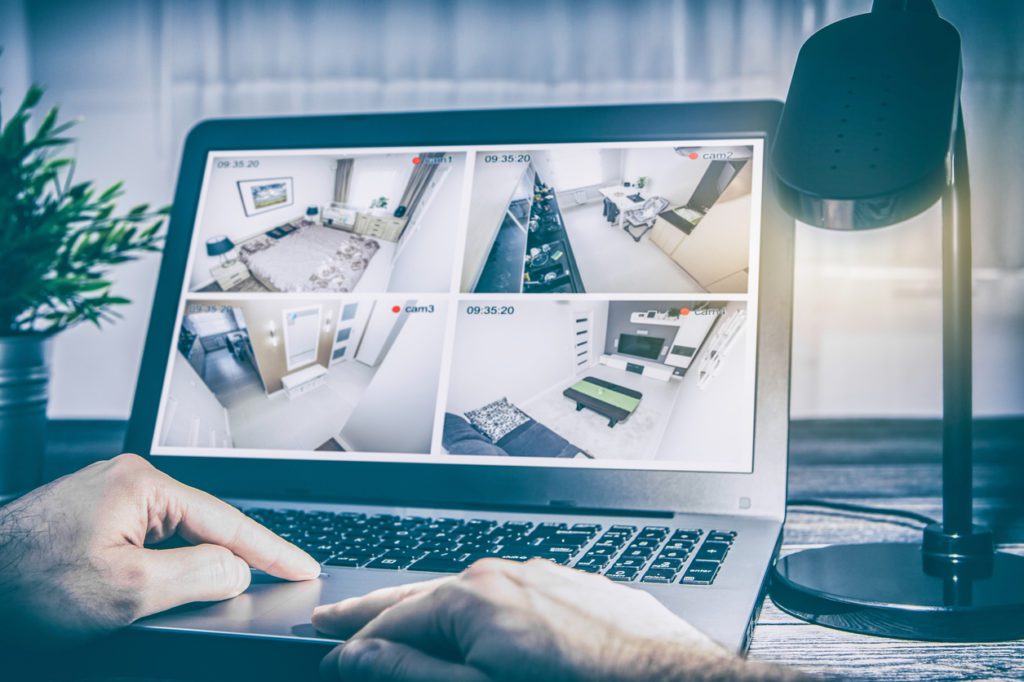What is Remote Surveillance
When you first think of remote surveillance and business security cameras, you probably imagine the peace of mind and value they bring in protecting and safeguarding your business assets. Time and again it’s been shown that cameras cut down on theft and, more importantly, act as an effective deterrent by making sure you aren’t targeted in the first place. However; your surveillance system can offer more—much more.
Today’s surveillance systems are significantly more advanced than they were just a couple of years ago. They can be used to analyze store traffic patterns, monitor employee activities, protect your business from fraudulent injury claims, and more. The real value in having a modern surveillance system comes from taking advantage of all of its capabilities. In this article, we’ll explore a few of the ways you can get the most from adding surveillance cameras to your business.
1. 24/7 Protection for Your Business
One of the most popular aspects of a surveillance system for your business is having the ability to monitor your business or various business locations with a mobile app and device. Advanced systems including those offered by Internet Service Providers like Cox Business allow you to simply log into the app from anywhere to quickly view live and recorded video of your business. You can search footage for specific timeframes and incidents when and where needed, whether you’re across town or across the country, after hours or on vacation. Keeping an eye on your business has never been easier.
2. Using Remote Surveillance Analysis to Boost Productivity
When Washington University’s Lamar Pierce did a study that looked at the impact of video monitoring on employee behavior at almost 400 restaurants, the results were a little surprising. Employee theft predictably went down. (This is a big deal for that industry because profit margins are so thin, and traditions like giving out a free round to get a big tip are standard practice for a lot of servers.) The unexpected thing, however, was that productivity and sales actually went up even more than theft went down
This obviously doesn’t apply to every situation. If employees feel like the video monitoring is going to lead to their every action being questioned and picked apart, they’ll start following every last protocol and process that’s assigned to them. You’ll get only what you’ve asked of them, and they’re less likely to try experiments or innovations that could lead to productivity gains.
As the Harvard Business Review notes, “perhaps the real upside of surveillance is the potential to spot and reward good work, not to deter bad conduct.” The key is to make sure you’re using surveillance as a way to offer positive reinforcement, and not as an endless source of criticism.
The trick is to use video and other metrics to identify what successful employees are doing right, and then leverage that as a training and feedback tool. You want your employees to feel like video is making their hard work and dedication more appreciated, rather than being used as a way to constantly peer over their shoulder.
3. Video and Remote Surveillance Protects You from Liability
Another huge benefit you might not initially consider when looking at video surveillance is the protection it offers you and your employees in the case of liability. So many of these instances can boil down to a he-said-she-said, so having a video record to back you up can be invaluable.
Liability can affect a small business in any number of ways. A customer can have an accident on your property and sue you for damages. Employees can file a harassment, discrimination, or other suit against you. Depending on what industry you’re in, you might also need to have records handy for compliance issues. The key is to make it clear to employees that the video cameras are there for their protection and that, no matter what happens, the recording will have their back if a situation gets out of hand.
Again, a running theme that you’ll notice is that the benefit of a video system isn’t simply that you have tapes when something goes wrong; it’s that the presence of cameras changes behaviors and makes these kinds of incidents less likely to occur.
4. Analyzing In-Store Traffic Patterns
When it comes to video surveillance, it’s not just employees that you can analyze. If you want to create an experience that is truly top notch, you need to start taking a look at how your customers move through your store, and what you can do to streamline that process.
The key when it comes to looking at customer behavior is to figure out an organized way to turn your video into data. You need to find a way to take what you’re looking at and turn it into numbers that you can slice into different perspectives. For every customer journey, you want to know where they were and when, so that you can look at both what sections of your business are popular, and also if that varies by time of day or day of week. These insights might make you rethink your ground plan, spacing out the most popular sections of the store so you can drive traffic to less popular sections that might benefit from more attention.
Going deeper, identify customers who have made a purchase, and then work backward to look at what a successful buying journey looks like. Are there things that these customers have in common? You want to look at everything, from what they’re buying to what time of day they generally come by. Do they spend time on their mobile device before they pick up their item, or do they make a beeline for what they’re purchasing and go straight to the register? If your staff knows to keep an eye out for anyone spending more than a couple of minutes on mobile, it can make a big difference for your sales numbers.
5. Lessens the Chance of False Alarms
Another advantage of a remote surveillance system and monitoring is that it can provide visual confirmation to you or the monitoring company in regards to any activation or alert. This greatly reduces the risks of false alarms and aids in the fastest and most appropriate response or action being taken.
Sirens and audio alerts are a good deterrent in many instances, but having a visual confirmation can ensure a proper response is activated and increases the odds of a culprit being captured in the case of criminal activity.
6. Reduced Business Insurance Premiums
In some instances, a remote surveillance system can actually lower your insurance premiums, although this varies by the insurance provider. You will need to check with your insurance company on what is available as well as the requirements.
What You Can Do Right Now
While we normally think of video surveillance as purely a security solution, there are a lot of other ways it can help your business. Using video surveillance as positive reinforcement can boost employee productivity and show your team that you have their back. In cases of liability or compliance, your camera system can be an important source of evidence to protect you. Finally, using video surveillance to analyze your customers’ behavior patterns can lead to important insights that can help you boost sales and fine-tune your layout. Taking advantage of new ways of using video surveillance can give you the edge you need to boost sales and productivity.
- Use video remote surveillance for positive reinforcement to show employees that it’s there to help them.
- Remind your team that the cameras will have their back for liability and compliance.
- Analyze buyer behaviors to identify telltale signs you can use to make a sale.


